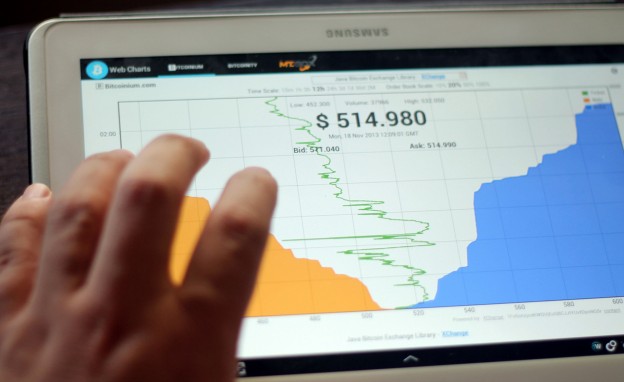
Click the image for the full series. (Image courtesy of Flickr user Brett Jordan and used here under Creative Commons.)
When you teach data reporting concepts to journalism students, you’re really teaching two things: the skills necessary to find and tell stories using data, and the knowledge required to understand the data itself.
This past semester I was lucky to be able to work with students at West Virginia University’s Reed College of Media on a project that combined public affairs reporting with data exploration and visualization. Guided by Professors Alison Bass and Bob Britten, students from two classes worked together to report on the 2014 midterm elections in West Virginia. (You can see much of their work on the class site we built.)

Photo by Ken Zirkel on Flickr and used here with Creative Commons license.
Using data to cover elections is what I do for a living, but translating my own habits and experiences to students — many of whom were new to covering elections — is a hard problem, and one that deserves a lot of thought and preparation. If students aren’t confident in data skills and their knowledge of the area they are trying to cover, they’re more likely to come away from the class discouraged.
Narrow your focus
This situation isn’t totally avoidable, but one way to approach it is to focus on one or two related datasets, rather than trying to find the “best” data to demonstrate each skill you want to teach. In our case, we mostly stuck with West Virginia voter registration data and campaign finance data.
Of the two, the voter registration data was the easiest to work with because most of the students either were registered voters (many in West Virginia) or were familiar with how the voter registration process worked and with basic West Virginia geography. Of the stories and graphics the class produced, most of the stronger material is about the voter registration data.
That’s no surprise; it’s much easier to teach how to look for interesting things in data when you’re familiar with what you’re looking at.
For example, Sarah Wisniewski and Shane Price created a series of graphics showing the rise of registered independents in West Virginia; the simplicity of the concept and their understanding of the data made the outcome much clearer. Several stories about campaign spending were well-done, but Federal Election Commission data is much more nuanced and subject to vagaries that can be hard to interpret.

Photo by John Open Data Institute Knowledge for Everyone on Flickr and used here with Creative Commons license.
The lesson for me, and for most people teaching data, is clear: When teaching data skills, it can help to pick a subject that students might have at least some familiarity with and encourage deep exploration of it, rather than trying to introduce them to a complex dataset in a single semester.
To be fair, this is a lesson that I don’t always adhere to in my own teaching, but I do try to stick to a small set of data in my classes and assignments. When teaching about using ratios to compare populations of different sizes, I often use the example of colleges that produce the greatest number of Peace Corps volunteers because that’s something most students can relate to.
Work from home
There’s another possible lesson here, though: Maybe universities that are teaching data skills to journalism students should maintain their own datasets that students work on, refine and explore on an ongoing basis. In the case of West Virginia, the university could request regular updates of the voter registration data and build a comprehensive dataset that would be a resource to students, faculty and professionals. It could augment the data through surveys or other contacts with the public, so that the university would be a leading source of information about the voters of the state. Students would get experience in working with and reporting on data, faculty could use it for research, and professionals could tap it for their work.
Derek Willis finds stories in data for The Upshot, a politics and policy site by The New York Times. He has been a reporter and web developer since 1995. Find him online @derekwillis or on his site.

